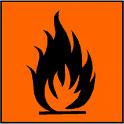In this section I intend to show how simple things can result in quite complex achievements.
The slot car I'm presenting was bought as a plain white kit. After some painting and tuning, it resulted in one of my most enjoyable slot cars ever.
To start where it also started, here are the looks on the paintjob:



I was feeling out of ideas when I had this body at the "paintshop", but I had the Castrol decal sheet at hand and a brand new can of Tamiya "Park Green" TS-35 spray and decided to give them a shot. A simple work with Tamiya masking tape, using some spares to create a "tear" effect at the rear resulted in a simple yet very good looking Porsche. The rear wing was painted with the "Fluorescent Red" Tamiya spray paint and got a West logo on it. Only downside was that poor attempt to create a green screen on the top of the windshield. I used Vallejo Acrylics transparent green but I guess I missed the correct dilution. I used the red color equivalent to paint the rear lights and it worked fine.
This model was later used in and endurance race where it ingloriously fought a pack of NSR Corvettes. However, it still earned some praise, both on the paintwork and laptimes. So, I decided to give it a free tune-up. Cracking the nut open, here it is:

As you can see, both chassis, motor pod and guide arm are the stock parts you get from the white kit. It's better seen on the underside:

All the original screws holding body to chassis and motor pod to chassis were replaced by the metric screws available from NSR.
Free from any regulation restrictions, I gave it the mighty Slot.It Boxer2 motor. The power is transmitted to the axle by a 12 teeth nylon pinion attacking a NSR anglewinder crown, which results in a very smooth transmission. A lightweight Sloting Plus axle stopper was at hand and I used it to limit side-to-side travel on the rear axis. I kept the stock brass bushings and steel axle, they run so incredibly smooth that there's no use in changing them. I also kept the standard 17 wheels from the kit.

As I've previously mentioned, I do most of my running on Carrera tracks. Here, providing grip for this car can be a tricky thing. It is very nervous when full throttle is applied when very sticky are fitted. I found that some appropriately oiled MSC G1 19x10mm tires were a good compromise in terms of laptime and driving enjoyment.
The front axle was the biggest change from the original kit. I replaced it by a hollow Slot.It axle, with plastic Slot.It 16 wheels and "zero grip" 17x10 tires. A few spacers were used to get the adequate width and the M3 screws were used to set the appropriate height.

The arm guide had its travel greatly reduced using a thin Sloting Plus screw, which fits nicely on the arm and won't get stuck on the chassis. I replaced the original guide by a screw blade from NSR too.
So, how did this got to surprise me? Well, after running it intensely on Carrera tracks, I took it once to a Ninco track, with the setup straight from how it was for Carrera. I can tell you, I got ROCKED by the blistering performance on the Ninco track! The MSC tires worked perfectly here, as well as the chassis and guide setup. Looks like I got myself a great "hybrid" car, able to run quite respectfully on both kind of tracks...
That is it for today, stay tuned for more...




great job,looks very cool.
ReplyDeleteGreetings Slotracer65
Thanks! ;)
ReplyDeleteAs I said in the text, keeping things simple can give surprising results and this is just one example. But also NSR is to congratulate on the great level of detail and finish they provide on their models, helps making good things out of them.
The lining looks very crisp!! Cudo's for that. How do you do that ????
ReplyDeleteHi,
ReplyDeleteI've explained how to do the linings in the crevices on a previous post named "do you wash your car?".
Basically I just need to apply a somewhat special paint which can be named "wash", sometimes "ink" or even "shade" (normally it's wash). You need a black wash, a good brush (with size between 0, 00 or 000 should be enough) and some practice.
For reference, I've used my favourite Vallejo Wash "Black shade", ref. 73201.
Regards,
Hugo
Cool! Fantastic explanation about the Porsche car! Love it!
ReplyDelete